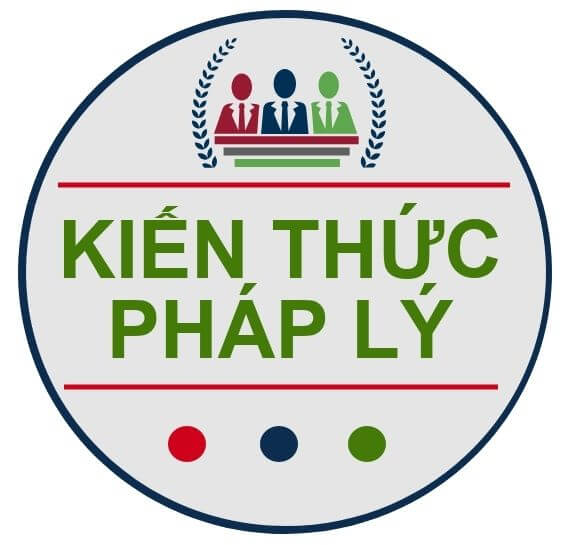Find the Vietnamese article HERE.
This question has been recently addressed by a variety of answers returned from Google (ranging from websites of not only law firms but also accounting ones and other reputable online publications). However, from the author’s observation, the substances thereof have not thoroughly provided anoverview picture, thereby causing confusion and misunderstanding.

Article 4 of Circular 09/2015/TT-BTC (“Circular 09”), which governs the forms of payment in mutual borrowing and lending activities between non-credit instutions, has been referred to in a number of online articles as a leverage for a non-credit institution to conduct lending activities. Such a conclusion is not theoritically correct.
To clarify, Article 8.2 of the Law on Credit Institutions 2010 (“CI Law”) reads:
“Individuals and organizations not being credit institutions are prohibited from conducting banking operations, except escrow, purchase and sale of securities by securities companies.”
Banking operations is defined in Article 4.12 of CI Law as following:
“Banking operations means regular business and regular provision of one or more of the following services:
1. Receipt of deposits;
2. Extension of credit:
3. Provision of payment services via accounts.“
Thus, the CI Law has clearly prohibited organizations not being credit institutions from conducting the lending activities (a form of extension of credit). On the other hand, the CI Law is a legal instrumentissued by the National Assembly and according to the Law on Promulgation of Legislative Documents 2015, it is apparent that CI Law is placed at a higher position than Circular 09 in terms of legal validity. The conclusion of non-credit institutions being able to lend made solely on the basis of Circular 09 without taking into account the CI Law is, therefore, not convincing. This is because with such an approach being employed, Circular 09 has negated the CI Law. In other words, the provisions of Circular 09 are contrary to that of the CI Law.
It is imperative to reaffirm that Circular 09 and the CI Law are not inconsistent. However, we need to address the question “Is a non-credit institution able to extend facility?” from the level of the CI Law rather than Circular 09.
The primary line of reasoning to assume the ability of a non-credit institution in carrying out lending activities is surrounding the substance of “banking operations”. Particularly, the analysis of the phrase “regular business and regular provision” as stated at Article 4.12 of the CI Law.
In principle, if the lending activity of a non-credit institution is not its “regular business and not being provided on a regular basis”, it shall not be treated as banking operations, and therefore, it falls out of the prohibitions stipulated by Article 8.2 of the CI Law.
Put it simply, the non-credit institutions may carry out lending activities if such activities are not regular business and not being provided on a regular basis.
Nonetheless, it is far from simple to interpret the phrase “regular business and regular provision”. Thisarticle shall first attempt to decompose the term “business” and subsequently, “regular provision” or“provision on a regular basis”.
How to identify “business”?
Article 4.21 of the Law on Enterprises 2014 (the “LOE”) stipulated:
“Business means the continuous conduct of one, several or all of stages of an investment process from production to sale of products or provision of service on the market for profit-making purposes.”
Hence, from the above interpretation, it is not difficult to realize two cornerstone elements of business, at least from the legal perspective, which are “continuous” and “profit-making purposes”. Whileattempts in indetifying the term “continuous” may be embodied in the phrase “regular provision”, thedecomposition of the “profit-making purpose” is currently debatable from various perspective.
On the one hand, it is argued that whenever a loan is come along with an accrued interest (regardless of being insignificant or otherwise), the act of facilitating such a loan has met the condition of “profit-making purpose”. Advocates of this view opine that only the interest-free loan transaction (which simply serves for the purpose of short-term capital support) may be deemed as a permitted transaction and may not be treated as banking operation under the CI Law. However, the counter-argument of the foreoging are twofold, (1) “profit-making purposes” should be conceptualized with a broad meaning, thereby a loan transaction with an interest being imposed does not necessary reflect the “profit-making purpose” but it may simply be a lending transaction conducted on an arm’s length basis, so long as the interest accrued therefrom accounts for a minimal proportion of such enterprise’s revenue and (2) the reliance on interest to conclude whether or not “profit-making purposes” exists is subjective because “profit” is not only limited to monetary benefits but also extended to other benefits or advantages that the lender may acquire from the lending transaction. Put differently, even if the enterprises facilitates a loan without interest, but via such a lending transaction it obtains another economic benefit or commercial advantage (whether direct or indirect), the “profit-making purposes” in nature is still satisfied. Therefore, these kinds of transaction must also be seen as business (obviouslyif it satisfied the condition of “continuous”).
On the other hand, some legal scholars are of the view that interest or non-interest is not the condition precedent for dertermining the “profit-making purpose”. This view seems to adopt a more generous approach whereby it assumes that as long as the lending transaction is not the primary source of revenue then it is obvious that there is no “profit-making purpose”. There are various elements and bounderies to determine whether the revenue from the lending transaction amounts to a primary one, including but not limited to (1) the proportion of revenue collected from the lending transaction on thetotal revenue of the enterprise in question (2) the primary business line of the enterprise, (3) the “regularity” of the revenue being collected from the lending transaction. In respect of this view, “profit-making purpose” and “regular provision” (as analyzed below) have a tight and mutual relationship with each other. To clarify, the transactions with the purpose of seeking profits obviously must be done regularly and vice versa.
Currently, to the extent of the author’s knowledge, there is an inclination among the State authorities being supportive for the latter view.
How to define “regular provision” or “provision on a regular basis”?
“Regular provision” or “continuous” is the most difficult element to quantify. How many transactions must take place in a week, a month, a quarter or a year to be assumed as “regularity”?
Nobody including state management agencies could come up with a particular quantity. From the author’s experience, the determination of “regularity” is not solely dependent upon the number of transactions being implemented within a specific time period. Indeed there is no uniform approach whereby a few transactions per year counld still be amount to “regular” but mutiple transaction per year could in several case be assumed as “irregular”. In addition to the number of lending transactions, the following grounds can also be taken into account to identify the “regularity”, which are, inter alia, (1) source of capital for lending; (2) the proportion between the lending value on the value of total investment assets; (3) the term of loan.
Particularly, if an enterprise conducts several lending transactions in a specific period time (of course not being implemented on mass scale and on a continuous basis) with the satisfaction of the below conditions:
(1) The source of capital using for lending comes from the enterprise’s idle capital (but not from the specific lending plan of such enterprise),
(2) The ratio of the lending value comparing with the total investment assets is low or relatively trivial,
(3) Such loan transaction is short-term one.
then in general, such transaction may not be assumed as “regular provision” or “provision on a regular basis”.
However, to note that since the prevaling laws have failed to set out any parameters and specifications, the interpretation and application of legal instruments are dependent upon a case-by-case basis and subject to each State authority at a local scale.
Carve-out
Pawnshop is the exception to the rule as it is not a credit institution but is still be able to carry out professional and regular lending activities in accordance with the laws. Pawshops are registered with the code 6492 (Vienam Standard Industrial Classification – VSIC), namely “Other credit extension activities”.
- CHUẨN MỰC “CẨN TRỌNG” TRONG QUẢN TRỊ DOANH NGHIỆP: NHẬN DIỆN, ĐÁNH GIÁ VÀ GIẢI PHÁP THỰC TIỄN - Tháng 8 16, 2025
- TUÂN THỦ PHÁP LUẬT LAO ĐỘNG CHO DOANH NGHIỆP – CÁC LOẠI BÁO CÁO ĐỊNH KỲ (PHẦN 1) - Tháng 4 9, 2025
- LỰA CHỌN CƠ QUAN GIẢI QUYẾT TRANH CHẤP TRONG GIAO DỊCH MUA BÁN CÔNG TY CÓ LIÊN QUAN ĐẾN BẤT ĐỘNG SẢN - Tháng 1 12, 2025







One Comment